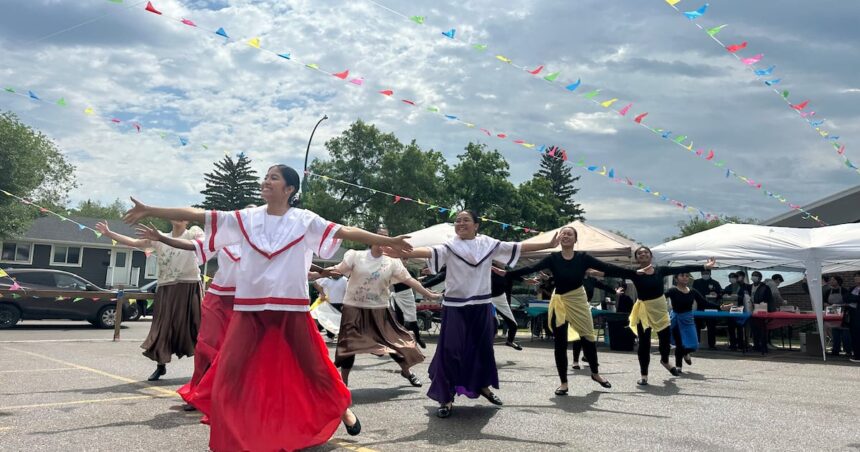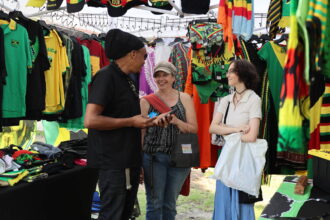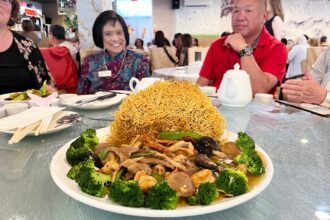The rhythmic beats of traditional Filipino music filled the air as colorful banners swayed in the summer breeze. Regina’s Filipino community came together this weekend for the annual Pinoy Fiesta, transforming the city’s Cathedral Neighborhood Centre into a vibrant celebration of heritage that bridged generations and welcomed the wider community into the fold.
What makes this gathering particularly significant isn’t just the spectacular display of cultural pride, but how seamlessly it weaves together the threads of identity, religion, and community that define the Filipino-Canadian experience. As someone who’s observed cultural festivals across the country, I’m consistently struck by how the Pinoy Fiesta manages to be both an intimate homecoming and an open invitation to cultural exchange.
“This celebration connects us to our roots,” explained Maria Santos, one of the event organizers. “For many of us who left the Philippines decades ago, these traditions are how we stay connected to home while building new lives here in Canada.” Her sentiment echoes what many cultural theorists have noted about diaspora communities—these celebrations serve as crucial anchoring points in the ongoing negotiation between cultural preservation and integration.
The festival centered around the Santo Niño, a religious icon depicting the infant Jesus that holds profound significance in Filipino Catholicism. Watching the procession of the ornately decorated statue, carried with reverence through crowds of onlookers, offered a window into how faith remains intertwined with cultural identity for many Filipino-Canadians. This religious dimension distinguishes the Pinoy Fiesta from other cultural celebrations, highlighting the complex ways in which spirituality shapes community bonds.
The culinary offerings alone were worth the visit—tables laden with pancit (noodle dishes), lumpia (spring rolls), and lechon (roasted pig) created an aromatic landscape that told its own story of Filipino history, with its Spanish, Chinese, and indigenous influences all present on a single plate. Food historians often point to Filipino cuisine as one of the original fusion foods, embodying centuries of cultural exchange long before “fusion” became a culinary buzzword.
What particularly struck me was the intergenerational nature of the festivities. Young Filipino-Canadians, some speaking Tagalog with varying degrees of fluency, performed traditional dances alongside elders who had carried these customs across oceans. This visual representation of cultural transmission in action speaks to the resilience of community identity in an age of rapid globalization and digital distraction.
“I’m learning things about my own culture that I never knew,” admitted Jason Reyes, a second-generation Filipino-Canadian in his twenties who attended with his grandparents. “It’s different experiencing these traditions in person rather than just seeing them on TikTok or Instagram.”
The festival also served as a reminder of the significant contributions Filipino-Canadians have made to Saskatchewan’s social fabric. From healthcare to hospitality, the community’s presence has shaped Regina in subtle yet profound ways that often go unacknowledged in broader narratives about Canadian multiculturalism.
Regina’s Pinoy Fiesta represents something increasingly precious in our fragmented cultural landscape—a space where tradition doesn’t calcify into nostalgia but remains vibrantly relevant through active participation and reinvention. As our social lives become increasingly mediated through screens, these embodied experiences of community and culture take on new significance.
As the festival concluded with an evening of performances showcasing both traditional Filipino dances and contemporary interpretations, the boundary between cultural preservation and evolution blurred beautifully. Perhaps that’s the most valuable lesson of events like the Pinoy Fiesta—culture is never static but continuously reimagined by each generation that inherits it.
In a world where authentic connection sometimes feels increasingly elusive, what will it take for us to recognize that these cultural celebrations aren’t just about maintaining traditions from elsewhere, but about actively creating the diverse cultural fabric that defines contemporary Canadian identity?
For more insights on cultural celebrations across Canada, visit our CO24 Culture section, or explore changing social patterns in our CO24 Trends coverage.


















